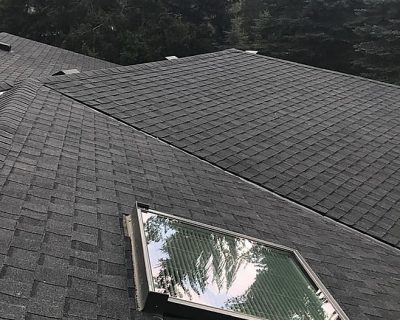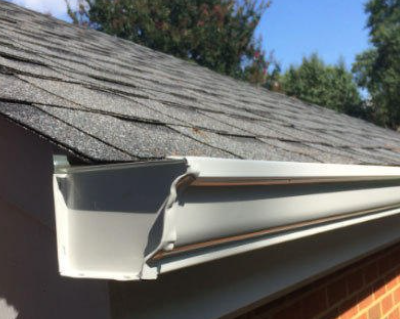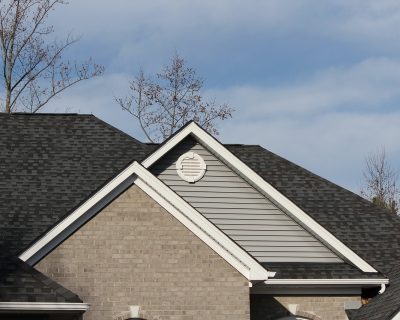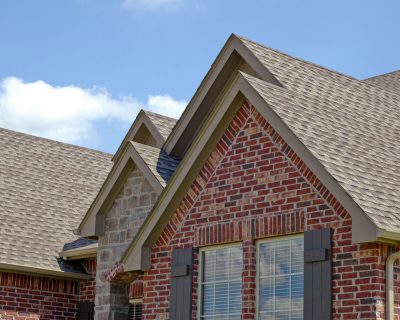
Most common mistakes roofing companies make
When it comes to installing a new roof, even seasoned shingle roofing companies can make critical mistakes that lead to costly repairs, premature failures, and potential headaches for homeowners. Whether due to oversight, lack of knowledge, or cutting corners, these mistakes can affect the longevity and performance of the roof. Identifying these common pitfalls can help homeowners make informed decisions when hiring a roofing contractor, ensuring they receive a durable, high-quality roof that stands the test of time.
1. Improper Nailing Techniques
One of the biggest mistakes made during shingle roof installations is improper nailing. Shingles need to be fastened correctly to remain secure against wind, rain, and other weather conditions. Roofing contractors can make several errors related to nailing, including:
– Overdriven or underdriven nails: Nails that are driven too deeply into the shingles can damage them, while nails that are not driven far enough may not hold the shingles securely. Both scenarios increase the likelihood of shingles loosening or blowing off in high winds.
– Misaligned nails: Nails should be placed in the correct spot on the shingle, which is typically the nailing strip or area indicated by the manufacturer. If nails are placed too high or too low, the shingles may not seal properly, leading to leaks.
– Insufficient number of nails: Some roofing contractors try to save time by using fewer nails than recommended. Most manufacturers require a specific number of nails per shingle (typically four to six) depending on the roof slope and wind exposure. Using too few nails compromises the roof’s ability to resist wind uplift.
Using improper nailing techniques is a mistake that can void warranties, shorten the roof’s lifespan, and lead to expensive repairs later. Homeowners should ensure their roofing company follows manufacturer specifications for nailing and fastening to avoid these problems.
2. Ignoring Proper Roof Ventilation
Another significant mistake shingle roofing companies make is failing to address proper roof ventilation. Ventilation plays a crucial role in maintaining the temperature and moisture levels in the attic and under the roof deck. When ventilation is inadequate or improperly installed, it can lead to a host of issues, including:
– Heat buildup: In the summer, an improperly ventilated attic can trap heat, causing shingles to overheat. This can shorten the life of the shingles and cause them to age prematurely, leading to cracking, warping, and curling.
– Moisture buildup: In the winter, warm air from inside the house can rise into the attic. Without proper ventilation, moisture can accumulate, leading to condensation and potentially causing mold, mildew, or wood rot on the roof deck and framing.
– Ice dams: Poor ventilation can also contribute to the formation of ice dams in cold climates. When heat escapes into the attic, it can melt snow on the roof, which refreezes at the edges, creating ice dams that can damage shingles, gutters, and flashing.
Roofing companies should always calculate the proper amount of ventilation required for the size and layout of the roof and ensure it is installed correctly to avoid these issues.
3. Neglecting the Importance of Flashing
Flashing is a critical component of a roofing system that prevents water from entering through vulnerable areas, such as around chimneys, vents, skylights, and valleys. One of the most common mistakes roofing contractors make is either improperly installing flashing or reusing old, worn-out flashing from the previous roof.
– Improperly installed flashing: Flashing must be placed correctly to create a watertight seal. It should be layered under the shingles and secured with roofing cement or sealant. If flashing is installed incorrectly, it can create gaps where water can seep through, leading to leaks.
– Reusing old flashing: Some contractors try to cut costs by reusing existing flashing when installing a new roof. However, flashing can wear out over time, corrode, or become damaged. Reusing old flashing increases the risk of leaks and compromises the overall integrity of the roof.
To avoid these issues, roofing companies should install new flashing with every roof replacement, ensuring it is securely fastened and sealed around all roof penetrations.
4. Not Installing Drip Edge
Drip edge is a metal flashing installed along the edges of the roof to guide water away from the fascia and into the gutters. Despite its importance, some roofing contractors skip installing drip edge altogether, either out of ignorance or to save time and money.
The absence of drip edge can lead to several problems, including:
– Water damage to fascia: Without drip edge, water can run off the roof and behind the gutters, potentially causing damage to the fascia boards, soffits, and even the walls of the home.
– Gutter issues: Drip edge helps direct water into the gutters. Without it, water may overflow the gutters or not reach them at all, leading to drainage problems and potential damage to the foundation.
Skipping drip edge installation is a common but avoidable mistake that can lead to long-term water damage. Homeowners should ensure that their roofing company includes drip edge as part of the installation process.
5. Skipping the Roof Deck Inspection
Before installing new shingles, it is critical to inspect the roof deck (the wooden surface beneath the shingles) for any signs of damage, rot, or deterioration. Unfortunately, some roofing companies fail to conduct a thorough roof deck inspection before beginning the installation, leading to problems down the road.
If the roof deck is compromised, it will not provide a stable foundation for the shingles, and the new roof may not perform as expected. Issues like wood rot or weakened decking can cause shingles to buckle or sag, leading to leaks and other structural problems.
A thorough inspection of the roof deck should be standard practice for any reputable roofing company. If damaged areas are identified, they should be repaired or replaced before the new shingles are installed.
6. Poor Underlayment Installation
Underlayment is the protective layer installed between the roof deck and the shingles. It acts as a secondary barrier against water penetration in case the shingles are damaged or compromised. Some roofing companies either skip installing underlayment or install it incorrectly, which can lead to serious consequences.
– Skipping underlayment: Some contractors may cut corners by omitting underlayment, relying solely on the shingles to provide protection. This is a major mistake, as underlayment is crucial in preventing water infiltration and protecting the roof deck from moisture.
– Improper installation: Even when underlayment is used, it must be installed correctly. If it is not overlapped properly or if gaps are left between sections, water can seep through and damage the roof deck.
Homeowners should verify that their roofing contractor includes high-quality underlayment in their installation process and ensures it is applied according to manufacturer specifications.
7. Choosing the Wrong Shingles for the Climate
Not all shingles are created equal, and different roofing materials perform better in different climates. Some roofing companies make the mistake of recommending or installing shingles that are not suited to the local climate conditions.
For example:
– In hot climates, darker shingles can absorb too much heat, leading to premature aging and increased cooling costs.
– In areas prone to high winds, standard shingles may not provide sufficient wind resistance, leading to blow-offs and roof damage.
A reputable roofing company should recommend shingles that are specifically designed to withstand the local weather conditions, ensuring the roof lasts as long as possible and performs optimally.
Conclusion
Installing a new roof is a major investment, and the quality of the installation is just as important as the materials used. The biggest mistakes made by shingle roofing companies—improper nailing, poor ventilation, ignoring flashing, skipping drip edge, neglecting roof deck inspections, poor underlayment installation, and choosing the wrong shingles—can lead to costly repairs, premature roof failure, and structural damage. Homeowners should choose a roofing company that is knowledgeable, experienced, and committed to following industry best practices to ensure a high-quality, long-lasting roof.




